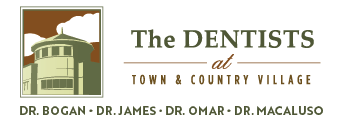There are a vast number of symptoms of TMD. The degree of your TMJ pain may vary, too. Some patients in our West Houston dental practice report sharp, unbearable stabs of pain. For others it’s a dull ache that doesn’t go away. Here are some symptoms of TMJ and how they may be impacting you:
Migraines and headaches. The TMJ migraines and headaches our patients experience differ from allergy or sinus-induced headaches. They return frequently, are not always responsive to medicine, and may be accompanied by tenderness or pain in the jaw.
Facial pain. Facial pain from TMJ might include:
– Swelling on either side of the face
– Tired cheeks or jaws
– Popping of the jaw
Ear pain. Ear symptoms are one of the most common complaints for TMJ sufferers. Often, patients complain about ringing in the ears or buzzing that doesn’t go away. This is caused when a misalignment of the jaw results in stress that radiates up the jaw line and irritates the ear canal.
Patients often report dizziness or numbness along with ear pain, which helps point to TMJ.
Congestion. Got a stuffy nose that just won’t go away? It could be a TMD symptom. The ears, nose and throat are so closely connected that aggravation of the jaw line can result in excessive mucus production. TMJ sufferers often find a decongestant has little impact on their frequent congestion.
Jaw pain. No surprise here: When the jaw is out of whack, it causes a lot of pain in the area. Frequent complaints include:
– Grating of the jaw
– Clicking of the jaw
– The jaw getting stuck when it’s opened or closed
While the degree of pain may vary, all are extremely annoying and can lower the overall quality of life.
Tooth pain. Yes, individual teeth can experience pain when the real cause is actually TMD. When the jaw is aligned and working properly, pressure will be spread out among the teeth when a person chews. But when the top and bottom teeth are not fitting together, teeth may come under too much pressure.
Neck and back pain. Pain caused by TMJ can radiate down your neck and back. This can be exacerbated by poor posture, which is a cause of TMD to begin with. When you thrust your head forward while sitting at your desk, for example, you strain your jaw and force it to “rest” in the open instead of the closed position. This puts it under stress, and your neck and back pay the price for that undue pressure.
Numbness of the arms, hands and fingers. Numbness of the extremities can be a symptom of many disorders, including TMJ. When muscle spasms caused by TMJ occur in your face, they can pinch other nerves in the body, leading to numbness in your arms, hands or fingers. Tingling may also occur in these areas and, in extreme cases, cold or bluing of these extremities can develop.
Rarely, TMJ will cause numbness in the face. Numbness occurs when the temporomandibular puts pressure on the nearby trigeminal nerve, which carries signals to your forehead and face. When this happens, it may cut off sensory input to these areas, resulting in loss of feeling.
Shoulder pain. Your jaw is not connected directly to your shoulder, so you may wonder how TMJ can cause shoulder pain. When you carry stress in your jaw, it can radiate down your body. For example, if your jaw is becoming fatigued because of poor posture that keeps your mouth open all the time, your shoulders will tense up to compensate for the exhaustion. This leads to shoulder pain.
Back pain. Like shoulder pain, back pain can also be linked to TMD because of poor posture. When your spine gets out of alignment, TMJ can develop, and your inability to stand up straight will result in pain in the upper back. Untreated, this TMJ pain will only get worse.


